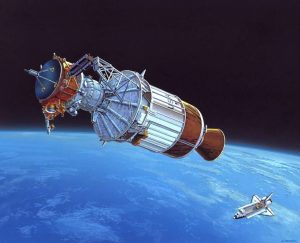- This topic is empty.
-
AuthorPosts
-
17/11/2025 at 11:45 #6307
Piping systems and critical equipment in the chemical industry typically withstand high temperatures, high pressures, and highly corrosive media, demanding extremely high welding quality standards. Traditional manual welding methods have limitations in terms of precision, efficiency, and safety, making it difficult to meet the high-quality piping system requirements of modern chemical enterprises. Orbital welding machines have emerged to address this need, achieving high-precision, high-consistency, and high-reliability welding results through automated control, becoming indispensable welding equipment in the chemical industry. This article will systematically discuss its wide application in the chemical industry.
1. Overview of Orbital Welding Machines
Orbital welding machines, also known as automatic circumferential welding machines or orbital welding machines, are industrial welding equipment specifically designed for welding pipes, thin-walled pipes, and precision metal components. They typically employ arc welding or resistance welding technology, achieving automation and high precision by controlling the welding current, voltage, rotation speed, and shielding gas.
Orbital welding machines generally consist of the following parts:
Welding head: Automatically rotates along a track to achieve circumferential welding.
Track system: Supports the movement of the welding head, ensuring accurate welding trajectory.
Control Unit: Controls welding parameters such as current, voltage, and welding speed through digital programs.
Cooling System and Protective Devices: Ensure the stability of the welding equipment during long-term operation while meeting safety requirements.
2. Main Applications of Orbital welding machines in the Chemical Industry
Equipment in the chemical industry is characterized by high pressure, high temperature, and corrosion resistance, placing extremely high demands on welding quality. The application of orbital welding machines in the chemical industry is mainly reflected in the following aspects:
2.1 Circumferential and Longitudinal Welding of Storage Tanks and Reactors
Storage tanks and reactors are core equipment in chemical production, and the quality of their welds directly affects the sealing and safety of the equipment. Traditional manual welding is not only inefficient but also prone to defects such as uneven welds, slag inclusions, and porosity. Orbital welding machines can:
Achieve automatic rotary welding of circumferential welds, ensuring uniform and continuous welds.
Properly control longitudinal welds, improving weld consistency.
Achieve welding of complex shapes through program presets, suitable for large-diameter storage tanks or special reactors.
For example, in the manufacture of high-pressure reactors, orbital welding machines ensure the long-term stable operation of welds under high temperature and pressure, reducing the risk of leakage and accidents.

2.2 Large-Diameter and High-Precision Pipeline Welding
In chemical production, pipeline systems are crucial channels for transporting reactants and products. Their welding requirements not only ensure sealing but also meet fluid dynamics design requirements. Orbital welding machines offer significant advantages in pipeline welding:
Large-Diameter Pipelines: orbital welding machines can adapt to various pipe diameters, achieving automatic circumferential welding by adjusting the rail diameter.
High-Precision Welding: Welding parameters can be digitally controlled to ensure precise weld size and shape.
Welding of Corrosion-Resistant Materials: Suitable for high-requirement pipelines such as stainless steel and nickel alloys, ensuring long-term corrosion resistance.
In chemical plants, orbital welding machines are widely used for welding pipeline systems transporting flammable and corrosive materials, such as sulfuric acid and ammonia pipelines.
2.3 Welding of Chemical Equipment Shells and Heat Exchangers
Chemical equipment, such as heat exchangers and reactor shells, typically has complex structures with numerous and evenly distributed welds. Track welding machines can:
Achieve welding of complex structures: Through a multi-axis track system, cylindrical, elliptical, and irregularly shaped equipment can be welded.
Improve welding efficiency: Automated welding reduces manual operation time and increases production speed.
Ensure weld quality: Digital control and programmed operation reduce human error, ensuring weld strength and sealing.
For example, in the welding of plate heat exchangers, track welding machines can simultaneously weld multiple tube bundles, improving equipment assembly efficiency.
2.4 Automated Welding in High-Safety Environments
Chemical plant environments are complex, often involving high temperatures, high pressures, and flammable and explosive substances. Traditional manual welding poses high safety risks. Track welding machines offer significant advantages in safety:
Remote operation: The welding process can be monitored by operators in a safety control room, avoiding direct contact with hazardous environments.
Explosion-proof adaptability: Track welding machines can be equipped with explosion-proof enclosures and isolation systems, making them suitable for flammable and explosive environments.
High stability: Automated welding reduces the impact of human factors on weld quality and safety.
In certain hazardous chemical production processes, track welding machines not only ensure weld quality but also effectively reduce the risk of worker injury.
2.5 Repetitive, High-Precision Welding Tasks
Chemical production equipment typically requires the welding of numerous similar components, such as pipe flanges, supports, and reactor nozzles. Orbital welding machines can:
Programmed Operation: Achieve high consistency in parts within the same batch through preset parameters.
Increased Production Efficiency: Reduce repetitive manual operation time and shorten production cycles.
Reduced Defect Rate: High-precision control ensures consistent weld size, angle, and filler volume, significantly reducing welding defects.
This repeatability and high precision make orbital welding machines highly competitive in the mass production of chemical equipment.
3. Advantages of Orbital Welding Machines in the Chemical Industry
The application of orbital welding machines not only improves welding efficiency but also fundamentally enhances the safety and reliability of chemical equipment manufacturing. Its main advantages include:
High-Precision Welding: Digital control ensures accurate weld size, shape, and penetration depth, meeting high-standard process requirements.
Automation and Programming: Reduces reliance on skilled welders, minimizes human error, and improves production consistency.
Adaptability to Complex Environments: Suitable for welding equipment in hazardous environments and with highly corrosive media.
Traceability: Welding parameters and operation records can be archived, facilitating quality management and equipment maintenance.
Improved Economic Efficiency: Reduces rework and equipment failure rates, lowering production costs and downtime risks.
4. Typical Cases of Orbital Welding Machines in the Chemical Industry
In practical applications, orbital welding machines are widely used in the manufacturing and maintenance of various equipment in the chemical industry. For example:
Large Storage Tank Manufacturing: A petrochemical company used a orbital welding machine to perform circumferential welding on storage tanks with diameters exceeding 3 meters. The welds were uniform and free of porosity, significantly extending the equipment's service life.
AuthorPostsViewing 1 post (of 1 total)- You must be logged in to reply to this topic.


